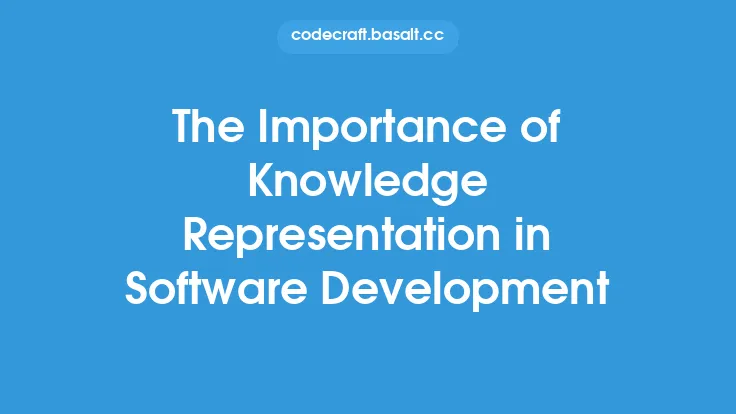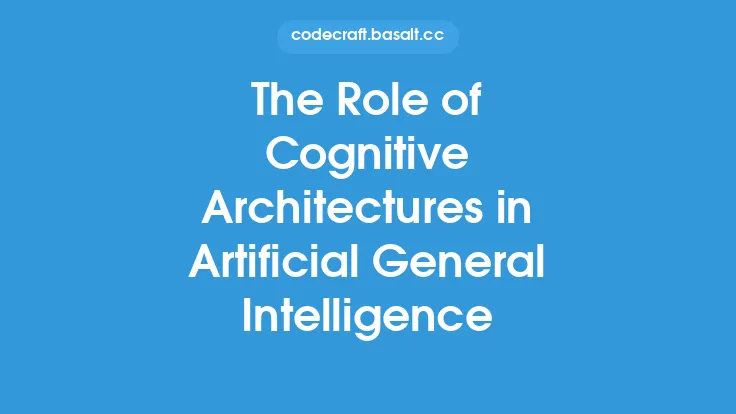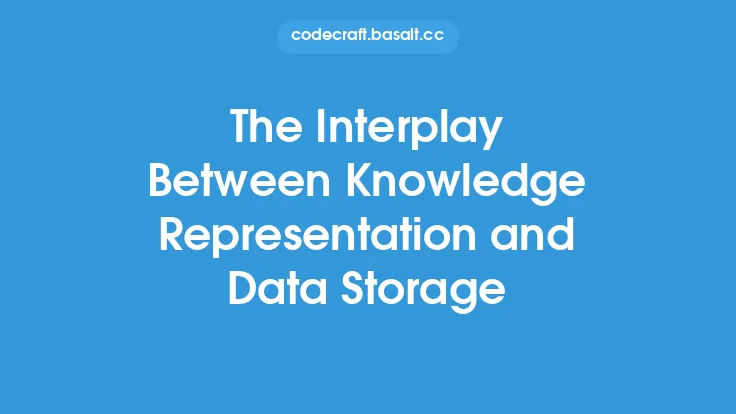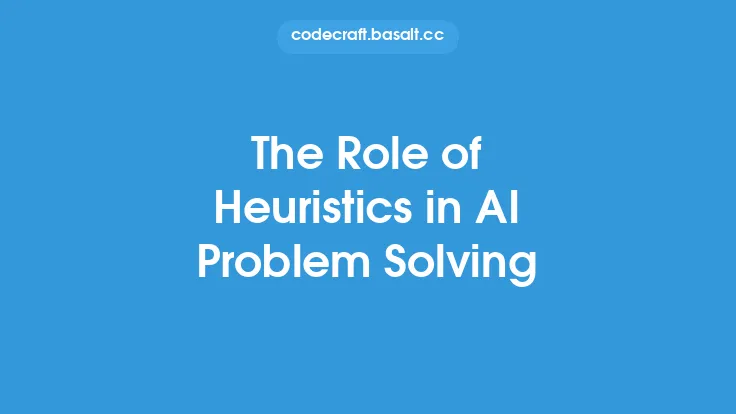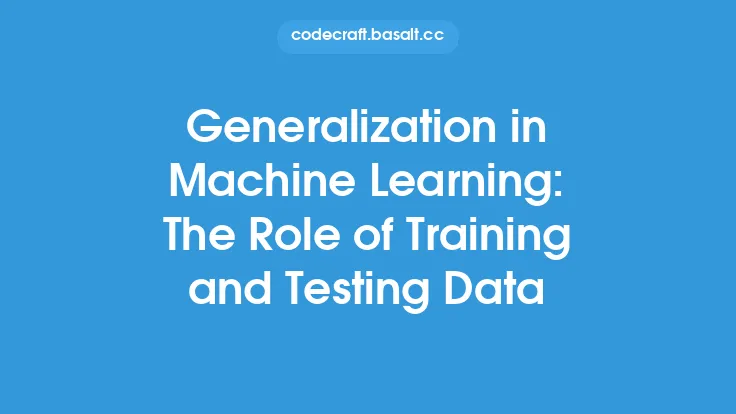Knowledge representation is a crucial aspect of artificial intelligence, as it enables machines to understand and reason about the world. One key concept in knowledge representation is ontologies, which provide a way to define and organize knowledge in a structured and formal manner. Ontologies are essentially a set of concepts, relationships, and rules that define a domain of knowledge, allowing machines to understand and reason about that domain.
What are Ontologies?
Ontologies are formal representations of knowledge that define a set of concepts, relationships, and rules for a particular domain. They provide a common vocabulary and a set of axioms that define the meaning of those concepts and relationships. Ontologies can be thought of as a blueprint or a map of a domain, providing a clear and concise definition of the concepts and relationships that exist within that domain. They are often used in artificial intelligence applications, such as natural language processing, expert systems, and knowledge-based systems, to provide a formal and structured way of representing knowledge.
Types of Ontologies
There are several types of ontologies, each with its own strengths and weaknesses. Some of the most common types of ontologies include:
- Domain ontologies: These ontologies define a set of concepts and relationships for a specific domain, such as medicine or finance.
- Task ontologies: These ontologies define a set of concepts and relationships for a specific task, such as diagnosis or planning.
- Upper-level ontologies: These ontologies provide a general framework for representing knowledge and are often used as a foundation for domain and task ontologies.
- Application ontologies: These ontologies are designed for use in a specific application, such as a knowledge-based system or an expert system.
Ontology Languages
Ontology languages are used to define and represent ontologies in a formal and structured manner. Some of the most common ontology languages include:
- OWL (Web Ontology Language): This is a standard ontology language developed by the World Wide Web Consortium (W3C) and is widely used in artificial intelligence applications.
- RDF (Resource Description Framework): This is a standard for representing data on the web and is often used in conjunction with OWL to define and represent ontologies.
- XML (Extensible Markup Language): This is a standard for representing data in a structured and formal manner and is often used to define and represent ontologies.
Building and Maintaining Ontologies
Building and maintaining ontologies is a complex and time-consuming process that requires a deep understanding of the domain and the concepts and relationships that exist within it. Some of the key steps involved in building and maintaining ontologies include:
- Knowledge acquisition: This involves gathering and analyzing data and information about the domain and the concepts and relationships that exist within it.
- Conceptualization: This involves defining and organizing the concepts and relationships that exist within the domain.
- Formalization: This involves representing the concepts and relationships in a formal and structured manner using an ontology language.
- Validation: This involves testing and validating the ontology to ensure that it accurately represents the domain and the concepts and relationships that exist within it.
Applications of Ontologies
Ontologies have a wide range of applications in artificial intelligence, including:
- Natural language processing: Ontologies can be used to provide a formal and structured way of representing knowledge and to enable machines to understand and reason about natural language.
- Expert systems: Ontologies can be used to provide a formal and structured way of representing knowledge and to enable machines to reason and make decisions based on that knowledge.
- Knowledge-based systems: Ontologies can be used to provide a formal and structured way of representing knowledge and to enable machines to reason and make decisions based on that knowledge.
- Data integration: Ontologies can be used to provide a common vocabulary and a set of axioms that define the meaning of concepts and relationships, enabling machines to integrate and reason about data from different sources.
Benefits of Ontologies
The use of ontologies in artificial intelligence has several benefits, including:
- Improved knowledge representation: Ontologies provide a formal and structured way of representing knowledge, enabling machines to understand and reason about the world in a more accurate and effective manner.
- Increased interoperability: Ontologies provide a common vocabulary and a set of axioms that define the meaning of concepts and relationships, enabling machines to integrate and reason about data from different sources.
- Enhanced reasoning and decision-making: Ontologies enable machines to reason and make decisions based on a formal and structured representation of knowledge, leading to more accurate and effective decision-making.
- Better data integration: Ontologies provide a common vocabulary and a set of axioms that define the meaning of concepts and relationships, enabling machines to integrate and reason about data from different sources.
Challenges and Limitations of Ontologies
Despite the benefits of ontologies, there are several challenges and limitations to their use, including:
- Complexity: Ontologies can be complex and difficult to build and maintain, requiring a deep understanding of the domain and the concepts and relationships that exist within it.
- Scalability: Ontologies can be difficult to scale, particularly in large and complex domains.
- Ambiguity and uncertainty: Ontologies can be affected by ambiguity and uncertainty, particularly in domains where the concepts and relationships are not well-defined.
- Maintenance and updates: Ontologies require regular maintenance and updates to ensure that they remain accurate and effective, which can be time-consuming and resource-intensive.
Future Directions
The use of ontologies in artificial intelligence is a rapidly evolving field, with several future directions and trends, including:
- Increased use of machine learning and deep learning: The use of machine learning and deep learning techniques to build and maintain ontologies is becoming increasingly popular, enabling machines to learn and reason about knowledge in a more effective and efficient manner.
- Greater emphasis on explainability and transparency: There is a growing need for ontologies to be explainable and transparent, enabling machines to provide clear and concise explanations of their reasoning and decision-making processes.
- Increased use of ontologies in edge AI applications: The use of ontologies in edge AI applications, such as IoT and robotics, is becoming increasingly popular, enabling machines to reason and make decisions in real-time and in complex and dynamic environments.
- Greater emphasis on human-ontology interaction: There is a growing need for ontologies to be designed and built with human-ontology interaction in mind, enabling humans to interact with machines in a more natural and intuitive manner.
